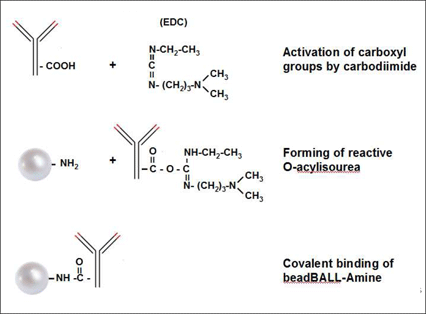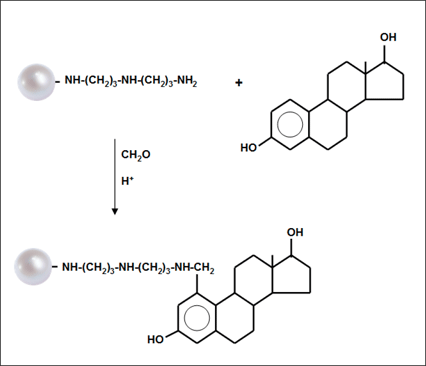Covalent Coupling Procedure on beadBALL-Amine via Carbodiimide Method
This procedure describes the covalent coupling of amino group containing ligands, such as antibodies, proteins or low molecular substances, to beadBALL-Amine by the carbodiimide method.
The carbodiimide method is a binary covalent binding procedure and guarantees a good reproducibility of the immobilization.
Carbodiimides react readily with the terminal carboxylate groups of the ligand to highly reactive O-acylisourea derivatives, which then react readily with amino groups of the microspheres.

Covalent Coupling Procedure on beadBALL-Amine via Mannich Condensation
This procedure describes the immobilization of compounds via aromatic ring to beadBALL-Amine by the Mannich reaction.
The Mannich reaction is useful for the coupling of compounds such as drugs, steroidal compounds, dyes, or other organic molecules which do not contain reactive components, e.g. primary amines, carboxylic acids, aldehydes or sulfhydryl groups.
The ligands are coupled by condensation with formaldehyde to terminal amine groups of the microspheres.
The coupling via Mannich reaction forms very stable covalent bonds which are useful for most affinity separations.

